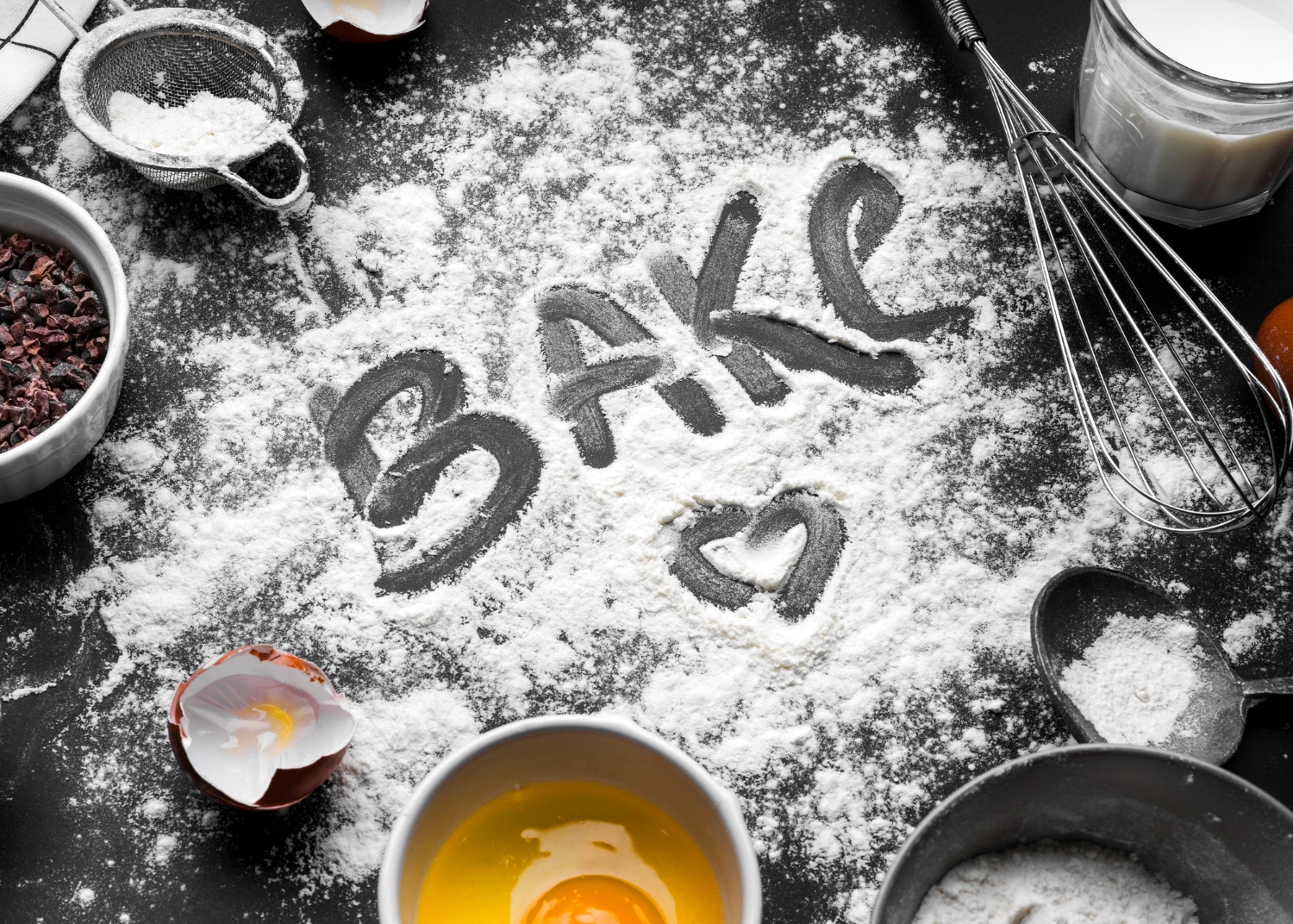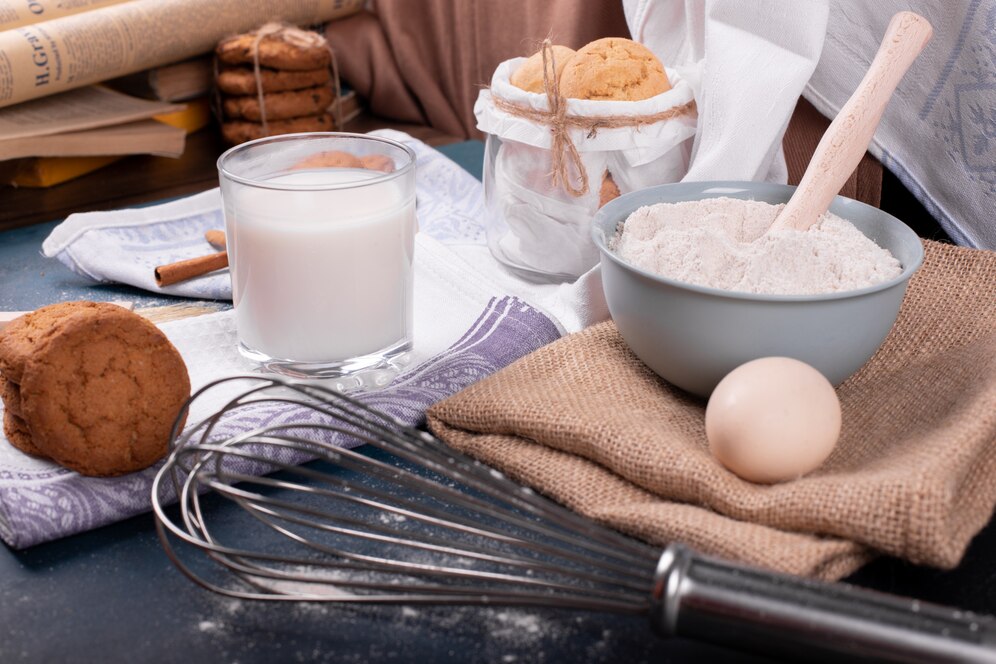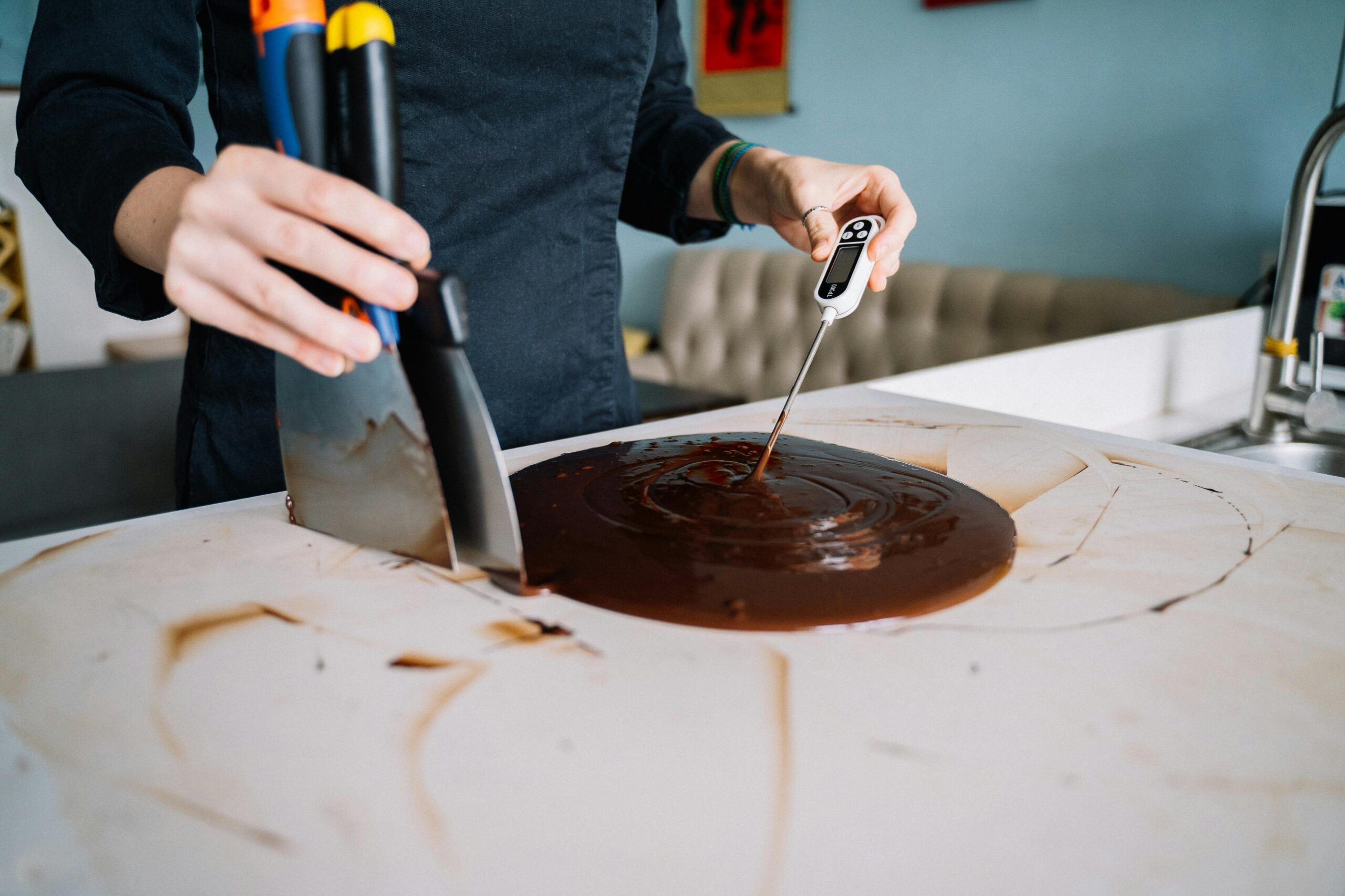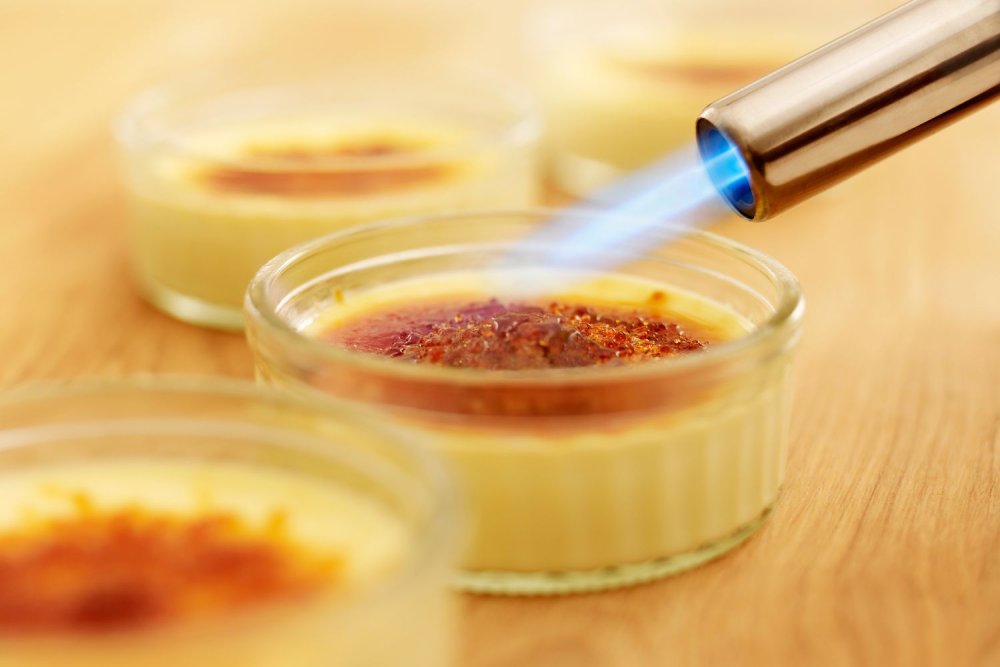
The Science of Baking: How to Get Perfect Results Every Time
Baking is described as an art and a science. In cooking, improvisations can lead to new and exciting flavours. But baking requires precision and an understanding of chemical reactions. You must have seen cakes sinking, cookies spreading too much or bread coming out too dense. The answer to all these questions is in the baking science of the ingredients and techniques. This guide will show you the best baking techniques and the most common baking mistakes. It will also break down the science so that you get perfect baking results every time.
Understanding the Role of Ingredients in Baking

Each ingredient in a baking recipe plays a crucial role. Even small variations can impact the final product.
1. Flour: The Structure Builder
Flour gives baked goods their structure. This happens because its protein forms gluten when mixed with liquid.
- All-Purpose Flour: A balanced protein content suitable for cakes, cookies, and pastries.
- Bread Flour: Higher protein content (12-14%) makes it ideal for chewy, structured bread.
- Cake Flour: Lower protein (7-9%) results in a tender crumb for delicate cakes.
- Gluten-Free Flours: Almond, coconut, and rice flours require binding agents. An agent like xanthan gum can replicate the structure.
2. Leavening Agents: The Rise Factor
Leavening agents add gas to the batter or dough. This makes baked goods light and airy.
- Baking Soda: Needs an acidic ingredient to react and create carbon dioxide. It can be found in buttermilk or vinegar.
- Baking Powder: A combination of baking soda and an acid, activated by moisture and heat.
- Yeast: A living organism that ferments sugars. It produces carbon dioxide to create air pockets in bread.
- Steam: Essential for choux pastry and puff pastry. The water in the dough turns to steam, causing expansion.
3. Sugar: Sweetness and Caramelisation
Beyond adding sweetness, sugar contributes to texture, colour, and moisture retention.
- Granulated Sugar: Provides structure and aids in browning.
- Brown Sugar: Contains molasses, adding moisture and chewiness to cookies and cakes.
- Powdered Sugar: Ideal for icings and frostings due to its fine texture.
- Honey & Syrups: Add moisture and depth of flavour while influencing browning and texture.
4. Fats: Tenderising and Flavour
Fats coat flour proteins, reducing gluten development and creating a tender crumb.
- Butter: Adds richness and flavour and helps with aeration when creamed with sugar.
- Oil: Produces moist and tender baked goods, ideal for cakes and quick breads.
- Shortening: Provides flakiness in pie crusts and pastries.
- Egg Yolks: Contain emulsifiers that help blend fats and liquids smoothly.
5. Liquids: Binding and Hydration
Liquids activate gluten and leavening agents, ensuring proper dough and batter consistency.
- Milk: Enhances flavour and tenderness while helping with browning.
- Water: Affects gluten formation and is crucial in bread baking.
- Buttermilk & Yogurt: Add acidity, reacting with baking soda for a lighter texture.
6. Eggs: The Versatile Ingredient
Eggs provide structure, moisture, and richness in baked goods.
- Egg Whites: When whipped, they create airiness (as in meringues and soufflés).
- Egg Yolks: Add fat and emulsify ingredients for smooth batters.
- Whole Eggs: Contribute both structure and moisture.
The Best Baking Techniques for Consistent Success

1. Measuring Ingredients Accurately
Baking requires precision, so measuring ingredients correctly is essential.
- Use a Digital Scale: Measuring by weight ensures accuracy and consistency.
- Spoon & Level Method for Flour: Avoid compacting flour. Scoop it with a spoon and level it with a knife.
- Liquid vs. Dry Measuring Cups: Use liquid cups for wet ingredients. Take dry cups for flour, sugar, and powders.
2. Mixing Methods and Their Effects
Different mixing techniques influence texture and structure.
- Creaming Method: Beating butter and sugar together creates air pockets for light cakes.
- Folding: Gently incorporates ingredients without deflating air. This is important for soufflés and sponge cakes).
- Kneading: Develops gluten in bread dough for a strong, elastic structure.
- Cutting In: Mixing fat into flour (as in pie crusts) creates flaky layers.
3. Controlling Temperature for Optimal Results
Temperature affects everything from ingredient behaviour to baking time.
- Room Temperature Ingredients: Butter, eggs, and milk should be at room temperature. This is true even for mixing.
- Preheated Ovens: Always preheat before baking to ensure even heat distribution.
- Oven Thermometer: Use one to verify your oven’s accuracy and avoid under- or overbaking.
Troubleshooting Common Baking Mistakes
Even experienced bakers encounter problems, but understanding the cause can help prevent them.
1. Why Did My Cake Sink in the Middle?
- Too Much Leavening: Excess baking soda or powder causes rapid rising and collapsing.
- Underbaking: The centre hasn’t been set properly before removal.
- Opening the Oven Door Too Soon: Sudden temperature changes cause sinking.
2. Why Are My Cookies Spreading Too Much?
- Too Much Butter or Sugar: Leads to excessive spreading.
- Overmixing Dough: Develops too much gluten, causing toughness.
- Warm Dough: Refrigerate before baking to maintain shape.
3. Why Is My Bread Dense and Heavy?
- Not Enough Kneading: Weak gluten structure prevents proper rising.
- Expired Yeast: Old yeast won’t create enough gas for the rise.
- Too Much Flour: Makes dough stiff and prevents expansion.
4. Why Is My Pie Crust Tough Instead of Flaky?
- Overworking the Dough: Develops too much gluten, making it chewy.
- Not Enough Fat: Butter or shortening needs to coat flour properly.
- Skipping Chilling: Cold fat creates steam pockets for flakiness.
Advanced Baking Science: Understanding Chemical Reactions

1. Maillard Reaction: The Secret to Golden Baked Goods
- The reaction between amino acids and sugars at high temperatures creates the golden brown crust in bread and pastries.
2. Caramelisation: The Science of Sweetness
- When sugar heats up, it breaks down. This creates rich, nutty flavours in desserts such as caramel sauce and crème brûlée.
3. Gluten Formation: The Key to Texture
- Overmixing batter develops too much gluten, leading to toughness.
- Delicate baked goods require minimal mixing to maintain tenderness.
Science for Perfect Baking Results
Understanding the baking science behind ingredients and techniques is important. You can troubleshoot mistakes, achieve better textures, and enhance flavour in every bake. The best baking techniques, precise measurements, and temperature control should be your friends. You can consistently create bakery-quality treats at home.
Next time you bake, try out different flours, sugars, and fats to see how they affect the final product. Have you encountered baking challenges? Share your questions or tips in the comments below, and let’s keep perfecting our skills together!